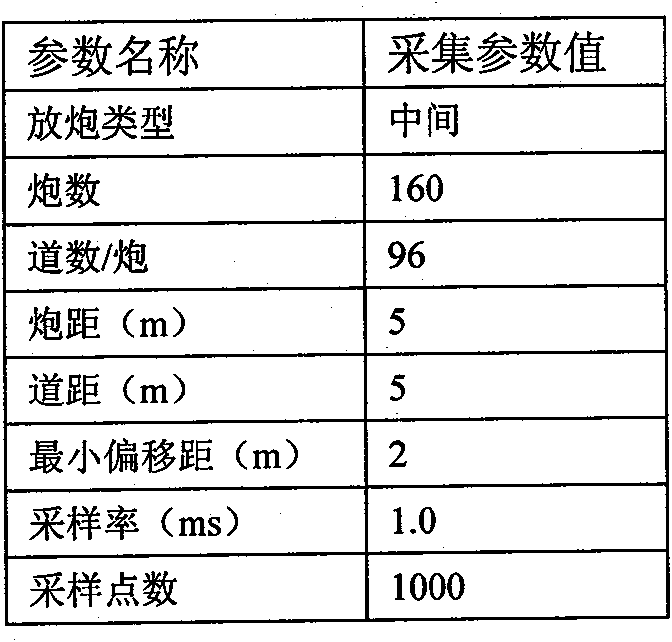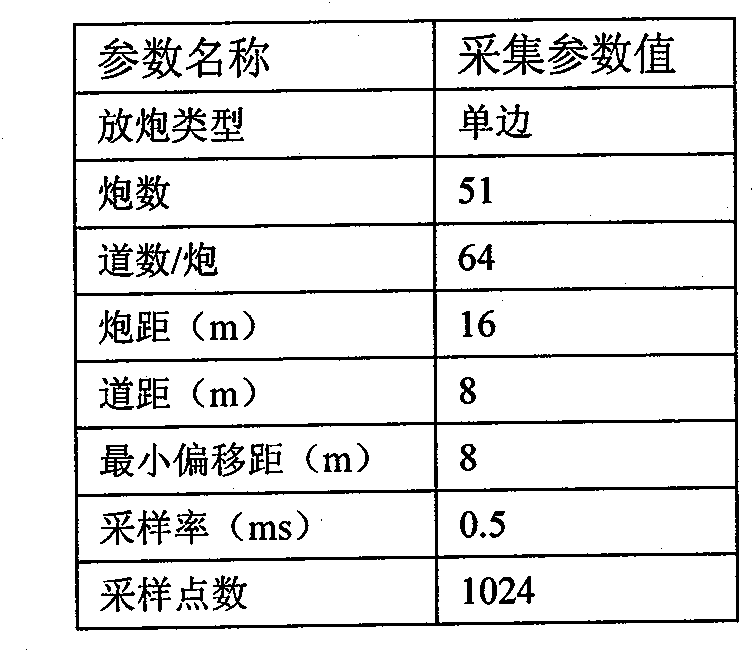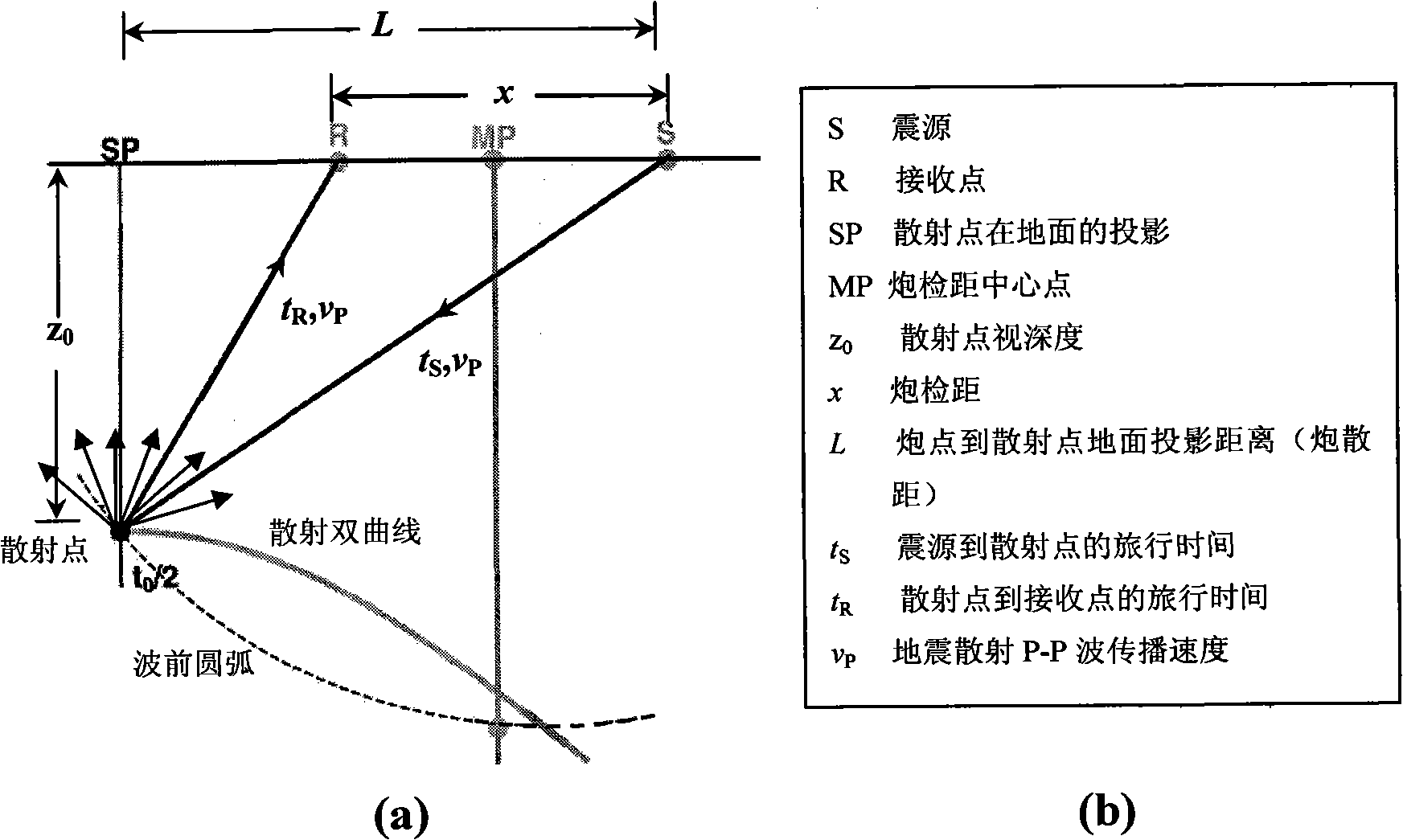Seismic scattering P-P wave imaging method
A technology of seismic scattering and imaging methods, applied in seismic signal processing and other directions, can solve problems such as weathering, achieve the effects of improving signal-to-noise ratio, enriching geological information, and improving imaging accuracy
- Summary
- Abstract
- Description
- Claims
- Application Information
AI Technical Summary
Problems solved by technology
Method used
Image
Examples
Embodiment 1
[0042] Take a fault model seismic data containing 51 shots, 64 traces per shot, and 1024 sampling points per trace as an example to illustrate the implementation steps of this example:
[0043] Step 1: Read the seismic data containing 51 shots, 64 traces per shot, and 1024 sampling points per trace into the two-dimensional array F, and load the observation system parameters into the original seismic data trace header, and according to the observation system and acquisition parameters to calculate the location and coordinates of scattering points;
[0044] Step 2: According to the time-distance hyperbolic equation of the scattered wave, on the shot set, fix t 0i In the case of , the scattering hyperbolic trajectory is determined by the imaging velocity, and then the seismic scattering P-P wave normal time difference is calculated.
[0045] The time-distance hyperbolic equation of seismic scattering P-P wave:
[0046] t ji = ...
Embodiment 2
[0056] Take an actual seismic survey data containing 160 shots, 96 traces per shot, and 1000 sampling points per trace as an example to illustrate the implementation steps of this example:
[0057] Step 1: Read the seismic data containing 160 shots, 96 traces per shot, and 1000 sampling points per trace into the two-dimensional array F, and load the observation system parameters into the original seismic data trace header, and according to the observation system and acquisition parameters to calculate the location and coordinates of scattering points;
[0058] Step 2: According to the time-distance hyperbolic equation of the scattered wave, on the shot set, fix t 0i In the case of , the scattering hyperbolic trajectory is determined by the imaging velocity, and then the seismic scattering P-P wave normal time difference is calculated.
[0059] The time-distance hyperbolic equation of seismic scattering P-P wave:
[0060] t ji = ...
PUM
 Login to View More
Login to View More Abstract
Description
Claims
Application Information
 Login to View More
Login to View More - R&D
- Intellectual Property
- Life Sciences
- Materials
- Tech Scout
- Unparalleled Data Quality
- Higher Quality Content
- 60% Fewer Hallucinations
Browse by: Latest US Patents, China's latest patents, Technical Efficacy Thesaurus, Application Domain, Technology Topic, Popular Technical Reports.
© 2025 PatSnap. All rights reserved.Legal|Privacy policy|Modern Slavery Act Transparency Statement|Sitemap|About US| Contact US: help@patsnap.com



